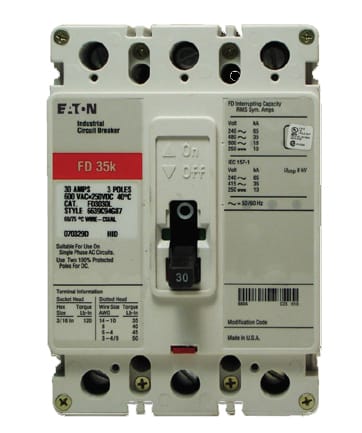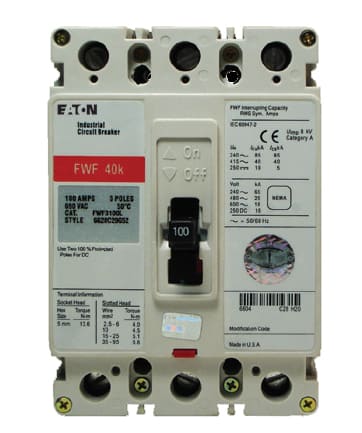RS’s “Ask The Expert” series taps into the experience and expertise of key thought leaders and subject matter experts from more than 500 global suppliers we work closely with to bring customers solutions for their most challenging problems (and the daily ones, too).

Tom Grace
Brand Protection Manager
Eaton
It is not news that for many reasons — such as the continuing COVID-19 pandemic fallout, trade sanctions, and raw material shortages — the global supply chain in the past year has been under enormous strain. Demand is nearing historic highs in some electronic component sectors, supply is severely limited, prices continue to escalate, and lead times are stretching as long as 52 weeks. According to a recent study by Gartner, these shortages are expected to last well into 2022, which will force many part consumers into making purchasing decisions that significantly increase their risk potential— entering what is known as “gray market.”
What Is the Gray Market?
A common misconception is that gray markets are synonymous with counterfeit parts, which are goods designed to mimic trademarked products without the consent of the original manufacturer. While counterfeits can be found within gray markets, the term gray market itself really refers to any unauthorized channel where legitimate but potentially substandard parts can be purchased.
“Gray markets are the result of sales through channels unintended by the original manufacturer and are influenced by commercial policies or global markets,” says Tom Grace, brand protection manager at Eaton Electrical Sector Americas. “A manufacturer might sell something for less inside of an assembly, for example, like a part in a panel for a house or commercial building. Individually, however, the part within that assembly will be valued higher. Your car is another good example — it is impossible to purchase each part of a vehicle individually and spend less than when you bought it new.”
Some of these gray market parts at first glance may appear to be “New in the Box” but they could also be:
- “Assembly pulls,” which are products stripped from assembled bundles.
- Used products with an unknown history of service or fault interruption.
- Repaired or reconditioned products that are modified to pass as new.
- Counterfeit products of unknown quality, performance, or safety.
The risk this uncertainty poses for a purchaser can be substantial, and in worst case scenarios, can have serious financial, reputational, and health-related consequences. A company could purchase old stock products marketed as new or open box but are 20 to 30 years old, for example, which could lead to malfunction. Alternatively, the parts could also be exactly as described, but there is no guarantee of quality, and most consumers are not educated enough on the risk to make a sound purchasing decision.

Genuine Eaton Molded-Case Circuit Breaker
“The goods we sell at Eaton are durable,” says Grace, “but they are protective devices. They are safety devices. When a product bearing our name is purchased, and that product is substandard in some way, that’s a problem.”
What Are Manufactures Doing to Mitigate the Issue?
Any manufacturer with solid brand recognition, high demand for their products, and a large customer base will inevitably find themselves on gray markets. Despite the risks gray markets pose, there is little protection from a legal perspective.
Fortunately, manufacturers such as Eaton are now going to great lengths to help customers to identify the authenticity of their purchases, as well as help the manufacturer itself track and monitor their products’ presence in gray markets.

Counterfeit
“Much of what appears in gray markets is the result of operating in a complex, loosely controlled supply and distribution chain,” says Grace. “When a manufacturer like Eaton sells product to a distributor such as RS, and that distributor has a global purchasing base, we have no idea where it goes after that. Every manufacturer has the same challenges, and they each have an obligation to go through the same steps to ensure their products are safe and protected in the marketplace and their customers get a new, genuine product.”
With counterfeit products posing the greatest risk in gray markets, manufactures are diligently working to create tools to aid the consumer in detecting them. Such tools can include overt markings such as serial numbers and date codes, but also more covert markings such as ink marks reactive to ultraviolet light that would be undetectable to anyone not aware of them. To combat counterfeiting efforts further, since 2015, Eaton has laser marked serial numbers into the frames of their products.
“You have to make your customer aware of these measures and ensure that they’re asking the right questions before making a purchase.”
“I can tell you we’re becoming a laser marketing center of excellence now,” says Grace, “because when you can directly mark on to the product, that makes it a lot harder to copy. Otherwise, you would have to grind off the etchings — which obviously makes the product more suspect.”
These features can be seen on Eaton’s new Power Defense Series of circuit breakers, which contains advanced electronic trip units that offer customers unprecedented protection for their equipment combined with Eaton’s latest brand protection strategies. “The identity of the product is now part of its DNA, so if you want to copy our product, you have to copy it exactly. On the carton label alone, there are about 20 security features built in to make the product easily identifiable,” says Grace.
A Continuous Process

Many manufacturers are also adopting new technologies to further streamline the authentication process. The Eaton Asset Manager, for example, is an app-based program that scans QR codes embedded on Eaton products, giving customers the ability to instantly access product information to authenticate the product through a detailed property anti-counterfeit system. Data sheets, specifications, and any additional information needed to identify, install, or use the product in the field are all available directly on the app.
These features, however, are only effective if they are combined with the final element of any sound protection strategy: consumer education. “Training and outreach are incredibly important,” says Grace. “You have to make your customer aware of these measures and ensure that they’re asking the right questions before making a purchase.”
Such education must be continuous and up to date, because as awareness of security features becomes more widespread, this gives bad actors more opportunities to update their own systems to bypass them. As security measures continue to evolve and become more advanced, so too must the consumer’s understanding of them. “We are constantly looking for ways to improve our products, not just from an energy efficiency and performance standpoint, but also to protect customers from people who want to compromise our reputation,” says Grace. “It’s a continuous process. Once we release a product, we are already thinking of the next way to protect our brand and customers.”
The Importance of Authorized Distributors
The risks gray markets pose to customers further establishes how critical purchasing direct from an authorized distributor such as RS is in a complex supply chain. With all RS purchases coming with a guarantee of authenticity and quality, customers receive a level of assurance especially from a health and safety perspective that is priceless.
“Using an authorized distributor like RS brings confidence to the buying process, which is invaluable,” says Grace. “For a product such as a circuit breaker, which can cause substantial damage if it is of substandard quality, that confidence is even more critical. You know when dealing with RS that it wouldn’t compromise on safety or quality.”








Thank you for the opportunity to contribute to Allied’s “Ask the Expert.” Additional information is available on Eaton’s website at http://www.eaton.com/counterfeit. We would also welcome questions or comments at report_fakes@eaton.com or tomagrace@eaton.com.